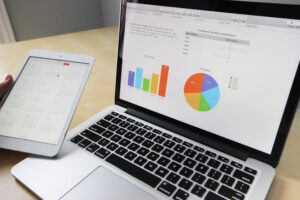Growth accounting helps economists understand how changes in factors affect economic growth over time. It is a financial tool that measures economic growth. For example, if there is an increase in investment in physical capital, this could lead to increased output due to more efficient production processes. Similarly, if technological advances allow for higher productivity levels with fewer resources being used, then this could lead to higher economic growth. By understanding how these different factors interact with each other and contribute to economic growth, economists can make better-informed decisions about policy interventions that will help promote long-term economic prosperity.
Table of Contents
ToggleWhat is growth accounting?
Growth accounting is a quantitative tool used to measure and analyze the sources of economic growth. It is an important tool for economists, as it allows them to identify the factors driving economic growth and determine how they can be improved. There are three focuses in Growth accounting: the labor market, capital, and technology. The labor market refers to the number of people employed in an economy, their wages, and their productivity. Capital includes investments in physical assets such as factories or machines and investments in intangible assets such as research and development. Finally, technology refers to advances in science and engineering that can increase productivity or reduce costs.
What is the growth accounting equation?
The growth accounting equation can be written in two ways:
- Y is GDP or total gross domestic output
- A is Total Factor Productivity
- K is the country’s existing capital stock
- L is the size of the country’s labor force
- ΔY is the change in GDP
- ΔA is the change in Total Factor Productivity
- ΔK is the change in the country’s capital stock
- ΔL is the change in the size of the country’s labor force
- αK is the capital’s share of the total income
- αL is labor’s share of total income
The Growth Accounting Equation can alternatively be written as follows:
- gY is GDP growth
- gA is TFP (Total Factor Productivity) growth
- gK is capital stock growth
- gL is labor force growth or population growth
In this scenario, there can be both positive and negative growth rates. Due to this, the equation can also be implemented to assess a decrease or an increment in real GDP. However, a complication with the formula is that it is quite hard to accurately determine the speed of technological progress. Therefore, its computation usually relies on the accountant’s discretion.
Source: corporatefinanceinstitute.com
Understanding Growth Accounting
The growth accounting equation is a weighted average of the growth rates of the factors involved. The three growth accounting focuses allow economists to measure how much each factor contributes to overall economic growth. By understanding how these factors interact, governments can make more informed decisions about their economic policies to promote long-term sustainable economic development.
Growth Accounting Factors
While the growth accounting equation can seem somewhat simple, identifying and calculating the data factors can be tedious. The Conference Board (CB) can help as it provides an annual breakdown of economic growth accounting by region.
Capital:
Investing in the economy should, among other effects, help increase productivity. Capital investment is critical to the success of an organization’s growth.
Labor:
To determine the growth rate, labor analysts assess the number of people employed. Generally, a larger workforce will produce more goods and services economically.
Technology:
Technology is an essential factor that contributes to economic growth. Advanced technology has the potential to increase productivity by utilizing existing capital goods even more efficiently.
FAQ
What Is the Solow Residual?
The Solow residual is an important concept in economics that measures the growth of a nation’s GDP that cannot be attributed to the growth of its capital or labor inputs. It was first proposed by Nobel Prize-winning economist Robert Solow, who suggested that technological advancement could be a major factor in this remaining piece of economic growth. This leftover piece of GDP growth is called total factor productivity (TFP).
What Is the Difference Between Growth Accounting and Development Accounting?
Development accounting looks at the disparities in growth factors between countries, while growth accounting focuses solely on the factors influencing the growth of a single nation.
What Are the Assumed Shares of Capital and Labor to Economic Growth?
Historically, labor has been assumed to contribute 0.30 and capital 0.70 to economic growth. However, these figures can be adjusted by economists if necessary.



